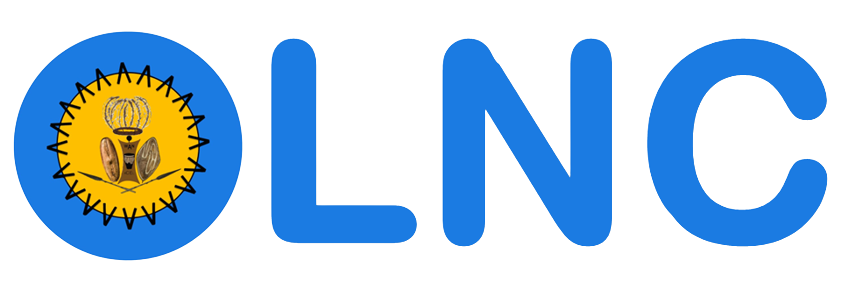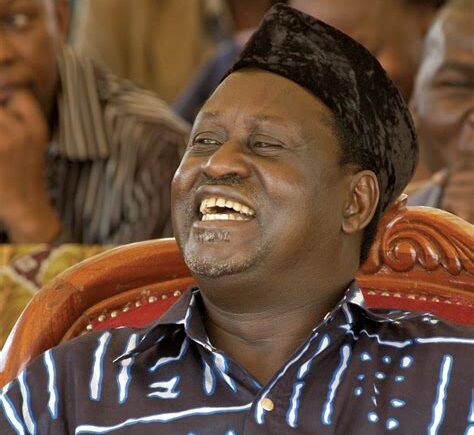The 1997 Campaign: A Third-Place Finish and Political Maturity
In Kenya’s 1997 General Election, Raila Odinga made his first bid for the presidency under the NDP banner. Running against the incumbent Daniel arap Moi and Democratic Party candidate Mwai Kibaki, Raila finished third with approximately 11% of the vote. It was a respectable showing for a new party, but far from the victory he had hoped for. Yet he retained his Langata parliamentary seat with a commanding majority, evidence that his constituents believed in him even if the nation was not yet ready.
The 1997 result was another painful reminder: the opposition remained divided, and Moi’s KANU continued to exploit those divisions masterfully. Raila watched as Moi, despite presiding over a collapsing economy and rampant corruption, secured another term simply because his opponents could not unite.
But what came next surprised many and earned Raila both praise and condemnation that would follow him throughout his career.
The Controversial Alliance with Moi
After denouncing the 1997 election results alongside Kibaki as rigged and illegitimate, Raila made a stunning political pivot. In subsequent months, he entered into negotiations with President Moi, forging a cooperation pact between the NDP and KANU. In June 2001, Raila joined Moi’s cabinet as Minister for Energy, a position he held until 2002.
The move shocked many. Here was Raila Odinga, a man who had been imprisoned and tortured by Moi’s regime, now sitting at Moi’s cabinet table. Critics accused him of betrayal, of abandoning principles for power. Some said he had dishonoured his father’s memory; Jaramogi had spent his final years opposing Moi’s authoritarian rule. Political rumors and folklore began to circulate, with some claiming Jaramogi had cursed Raila, declaring he would never rule Kenya, though no credible evidence of such a curse has ever been documented*. These stories, likely invented to explain Raila’s repeated electoral losses, became part of the mythology surrounding Kenya’s most persistent presidential candidate.
But Raila defended the decision as pragmatic politics. He argued that working from within the system was more effective than shouting from the outside, and that the cooperation agreement secured tangible benefits for Kenyans, including constitutional reform discussions and greater political space. In 2002, when NDP and KANU formally merged, Raila was elected KANU’s Secretary-General, replacing Joseph Kamotho, a position that placed him at the center of ruling party politics.
For a brief moment, it seemed Raila’s patient strategy might pay off. Many believed Moi would endorse him as his successor. But in a move that would reshape Kenyan politics, Moi stunned the nation by endorsing Uhuru Kenyatta, the 38-year-old son of founding President Jomo Kenyatta and a political novice, as KANU’s presidential candidate for the 2002 election.
Raila felt betrayed. Other KANU heavyweights including Kalonzo Musyoka, George Saitoti, and others shared his disappointment. It was the final straw.
2002: “Kibaki Tosha” and the Rainbow Coalition
In an extraordinary display of political agility, Raila walked out of KANU and formed the Rainbow Movement, joining forces with his former rival Mwai Kibaki to create the National Rainbow Coalition (NARC). At a historic rally, Raila declared “Kibaki Tosha!” (Kibaki is enough!), effectively endorsing Kibaki’s presidential bid and mobilizing his considerable support base, including an astonishing 98.5% of Luo voters, behind Kibaki.
The gamble worked. In December 2002, NARC delivered Kenya’s first peaceful transfer of power since independence, defeating Uhuru Kenyatta and ending KANU’s 39-year grip on power. Raila’s role was pivotal. His Luo community voted overwhelmingly for Kibaki, and Raila’s organizational skills and grassroots mobilization proved decisive.
Raila had finally helped deliver victory. He had maintained his Langata seat for a third consecutive term. And he had done so by proving he could put the nation’s interests above personal ambition, by uniting with former adversaries, and by demonstrating the kind of political maturity that comes only through years of struggle, defeat, and resilience.
From the ashes of detention, Raila Odinga had emerged not just as a politician, but as a statesman. His journey from political prisoner to kingmaker was only beginning.
Champion of Multiparty Democracy
Raila Odinga’s contribution to Kenya’s democratic transformation cannot be overstated. He was instrumental in dismantling the one-party state that had gripped Kenya for decades. Through his activism, courage, and political acumen, he helped usher Kenya into a new era of multiparty democracy in 1992. His voice echoed in the streets, in parliament, and in the hearts of Kenyans who dared to dream of a better tomorrow.
As a member of parliament for Langata Constituency from 1992 to 2013, and later as Kenya’s Prime Minister from 2008 to 2013, he demonstrated that leadership is about service, not self-interest.
*The Rumor Claims: Multiple articles claim that at the 1992 FORD-Kenya conference confrontation, Jaramogi told Raila: “I want to tell you this, if your intention is to sink me down for a takeover you will also struggle until your sunset days trying to be the president, and you will never be.”
Problems with This Story:
- No Primary Sources: All the articles trace back to a single 2017 “Venus News” (later “Venas News” – owned by Hamilton Media Group) publication with no original documentation, audio, video, or credible eyewitness accounts. There is no publicly available information about who the individual owner(s) or shareholders of Hamilton Media Group Limited are
- No Contemporary Reports: There are no newspaper reports from 1992-1994 documenting such a curse being uttered at the conference.
- The 1992 Incident is Real, but: While the confrontation at the conference definitely happened (Raila did storm in with rowdy youth, and Jaramogi did rebuke him, but the infamous curse words were not recorded by any mainstream media of the time) The alleged “curse” words appear to be embellished folklore added later possibly by political rivals
Published by the Luo National Congress
October 17, 2025


2 Responses
Raila Amolo Odinga was flexible and selfless individual he didn’t think about himself most of the time.He looked at what could be the best for Kenya as opposed to his personal interest.As jaluo we have lost a man of rare stature and we luo must continue building on his legacy.
Raila our political enigma RIP.